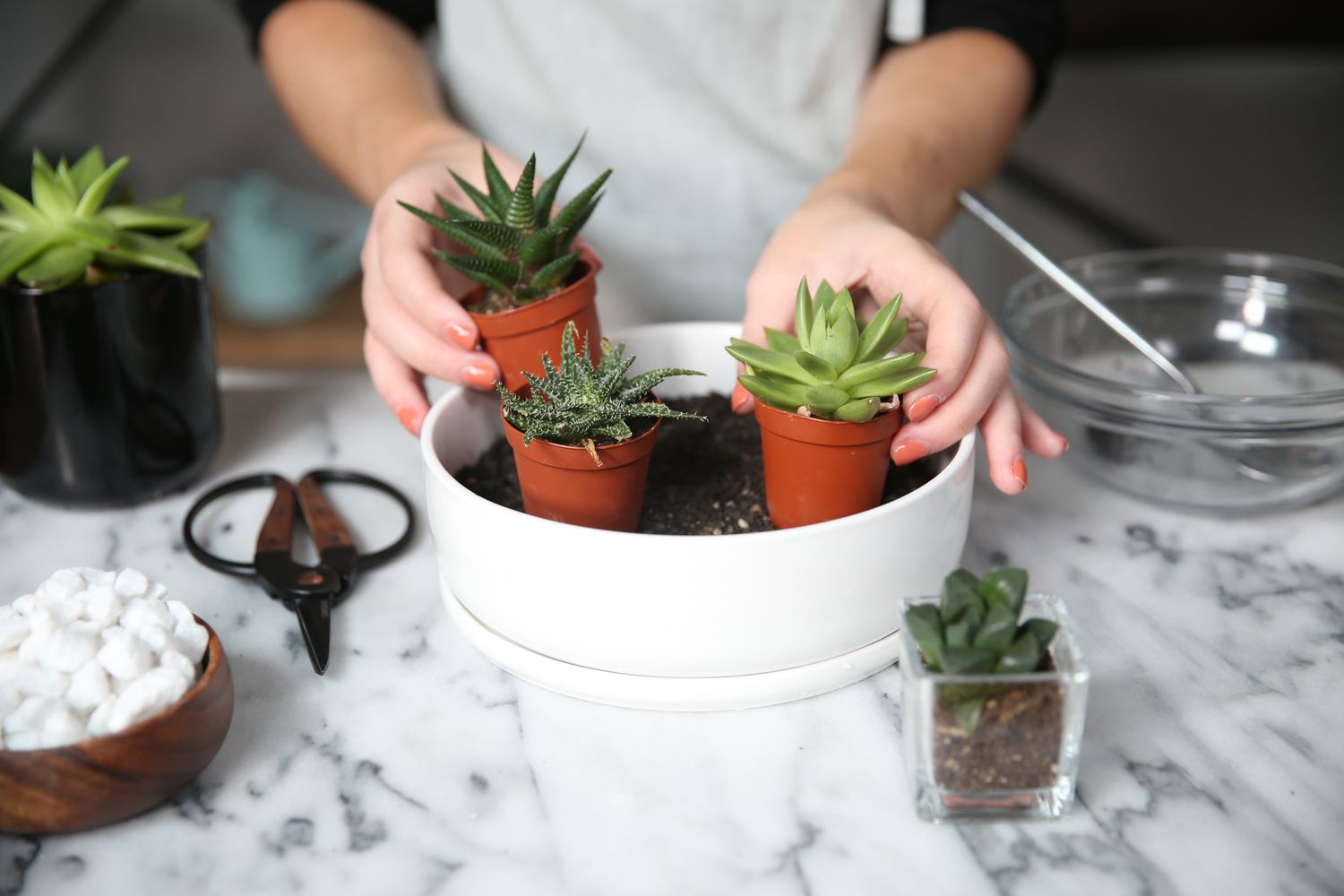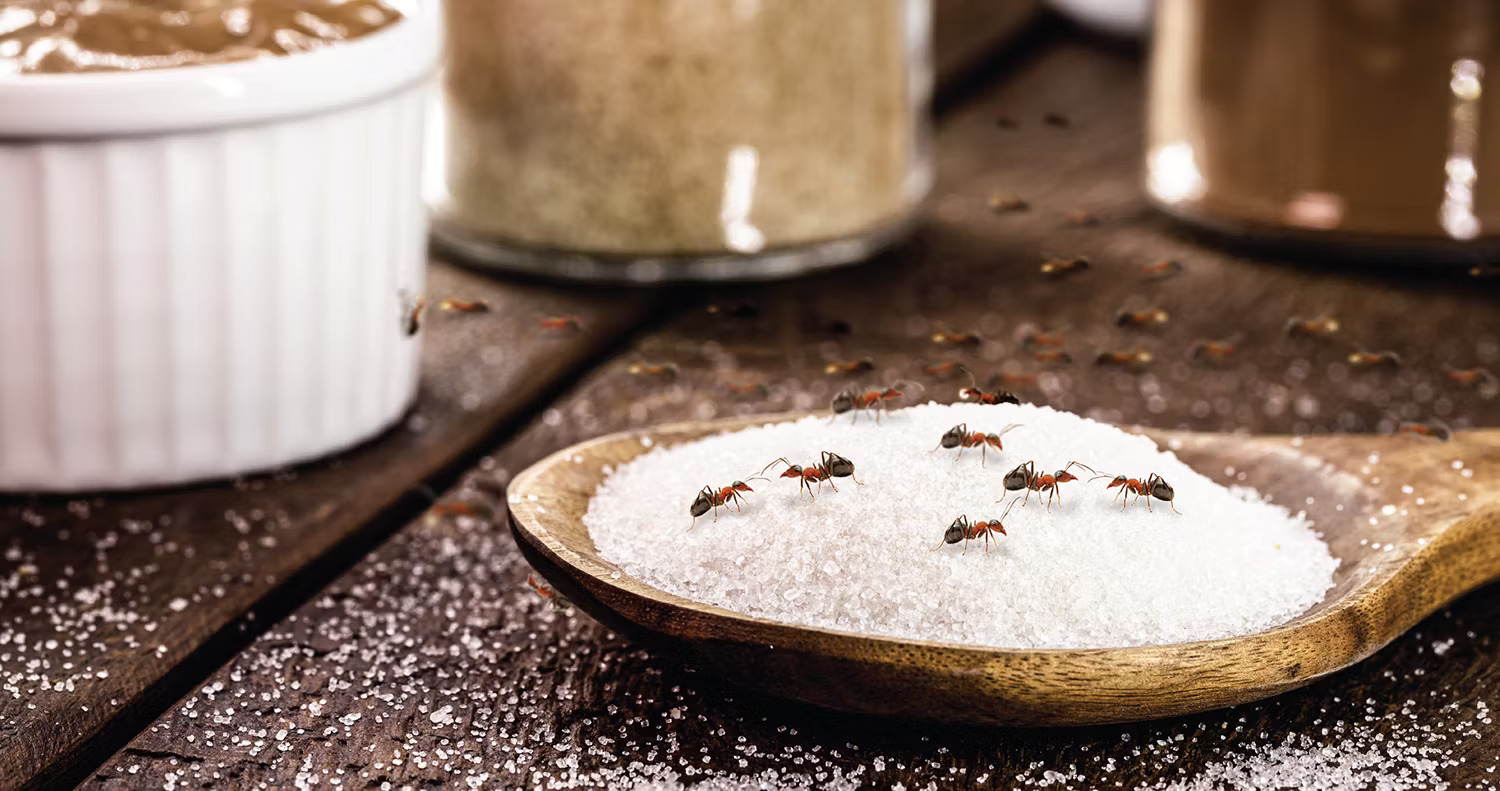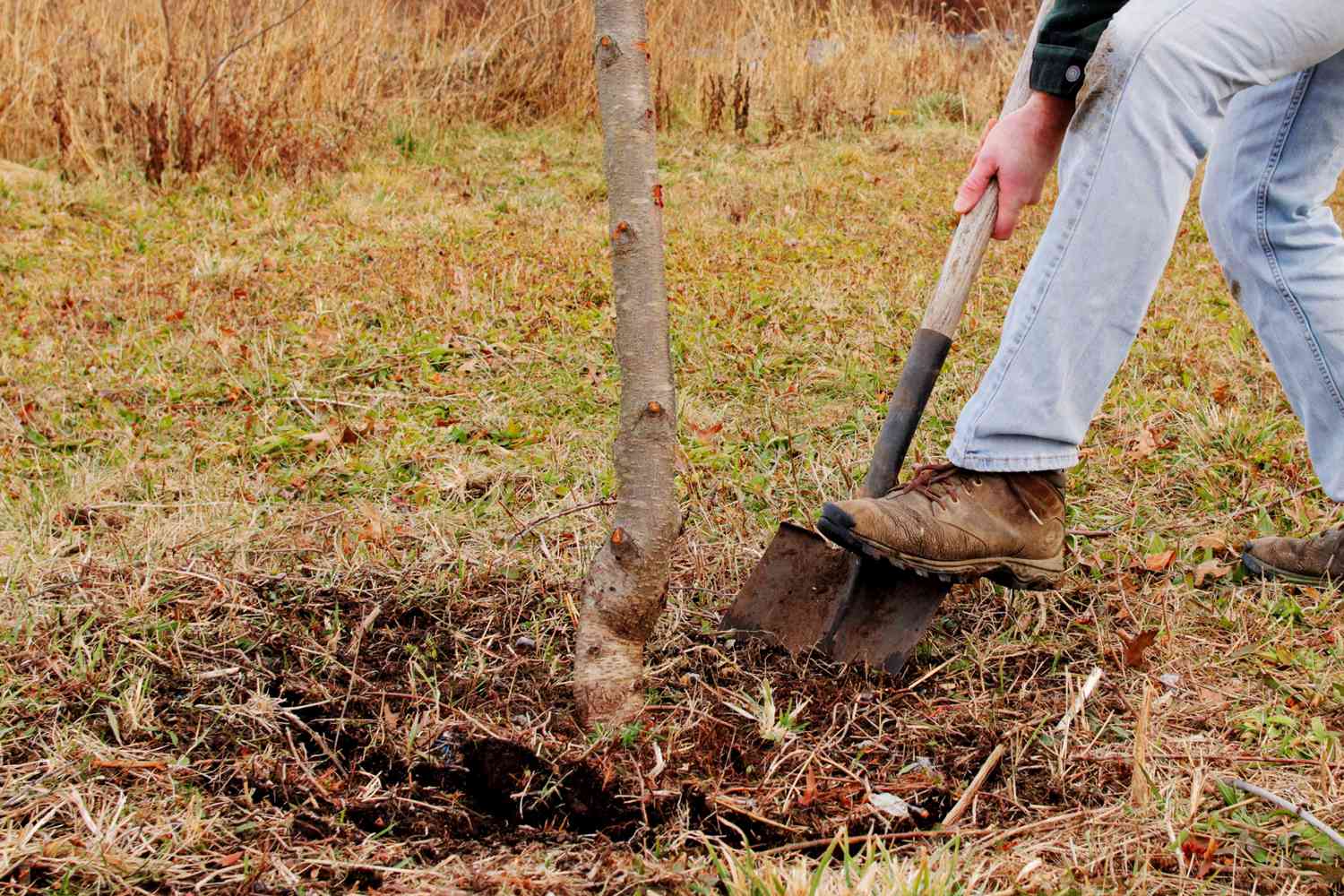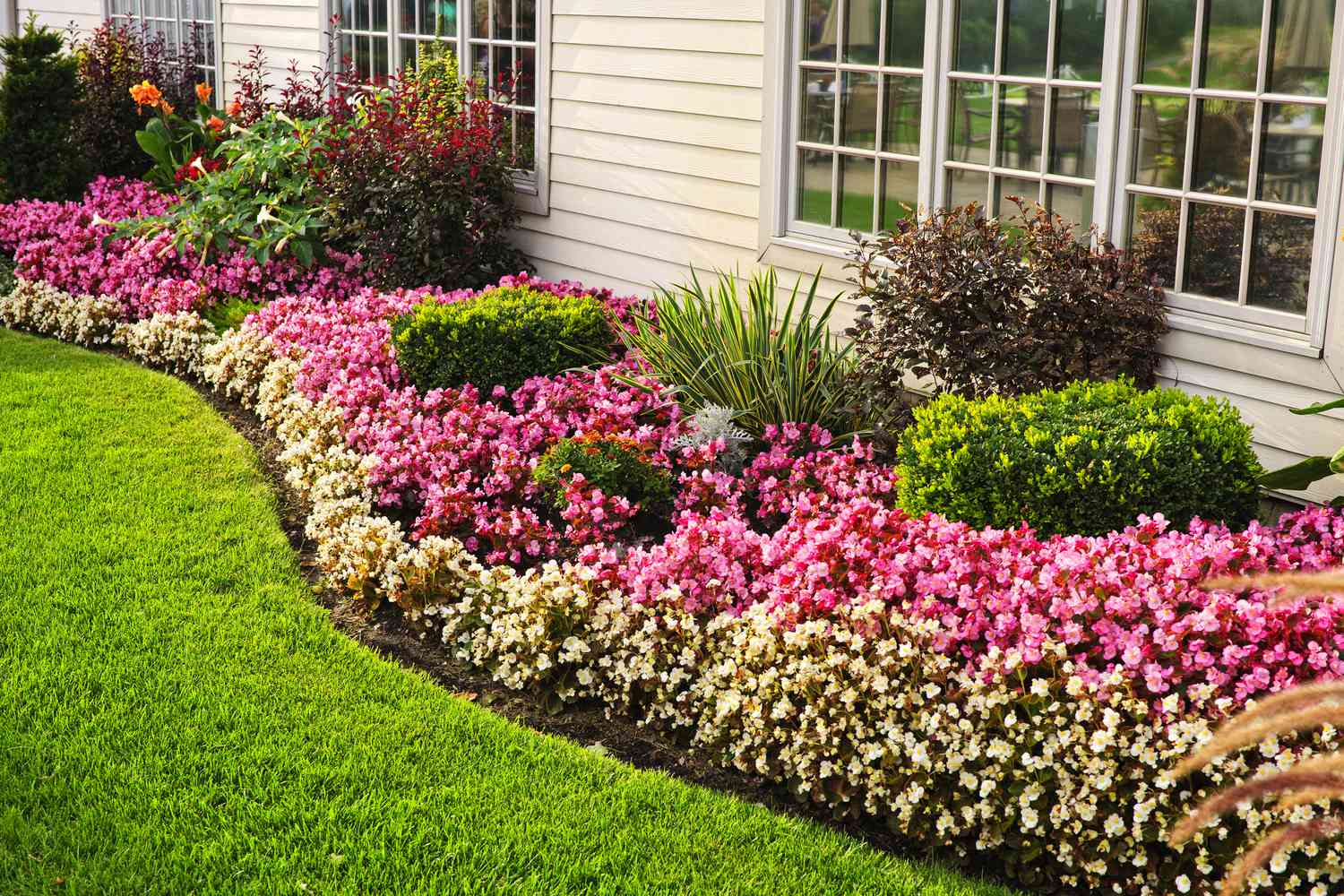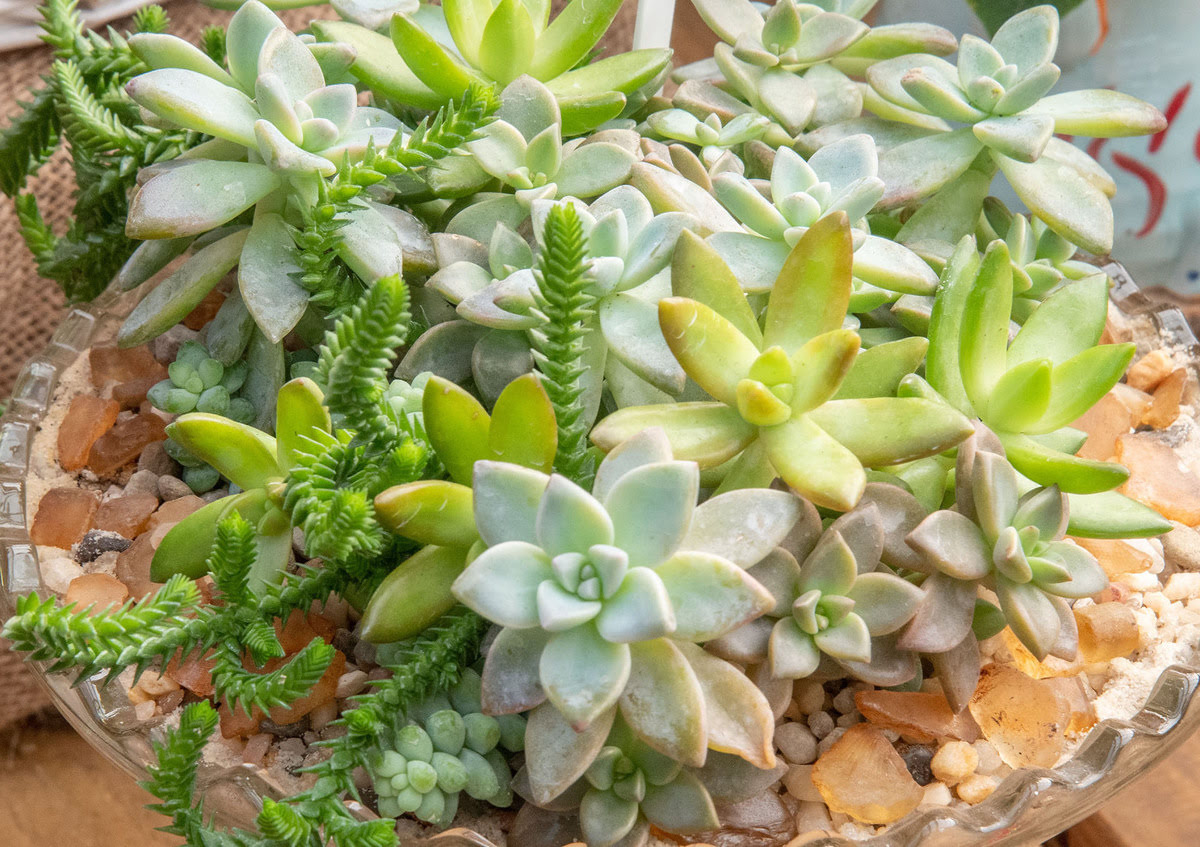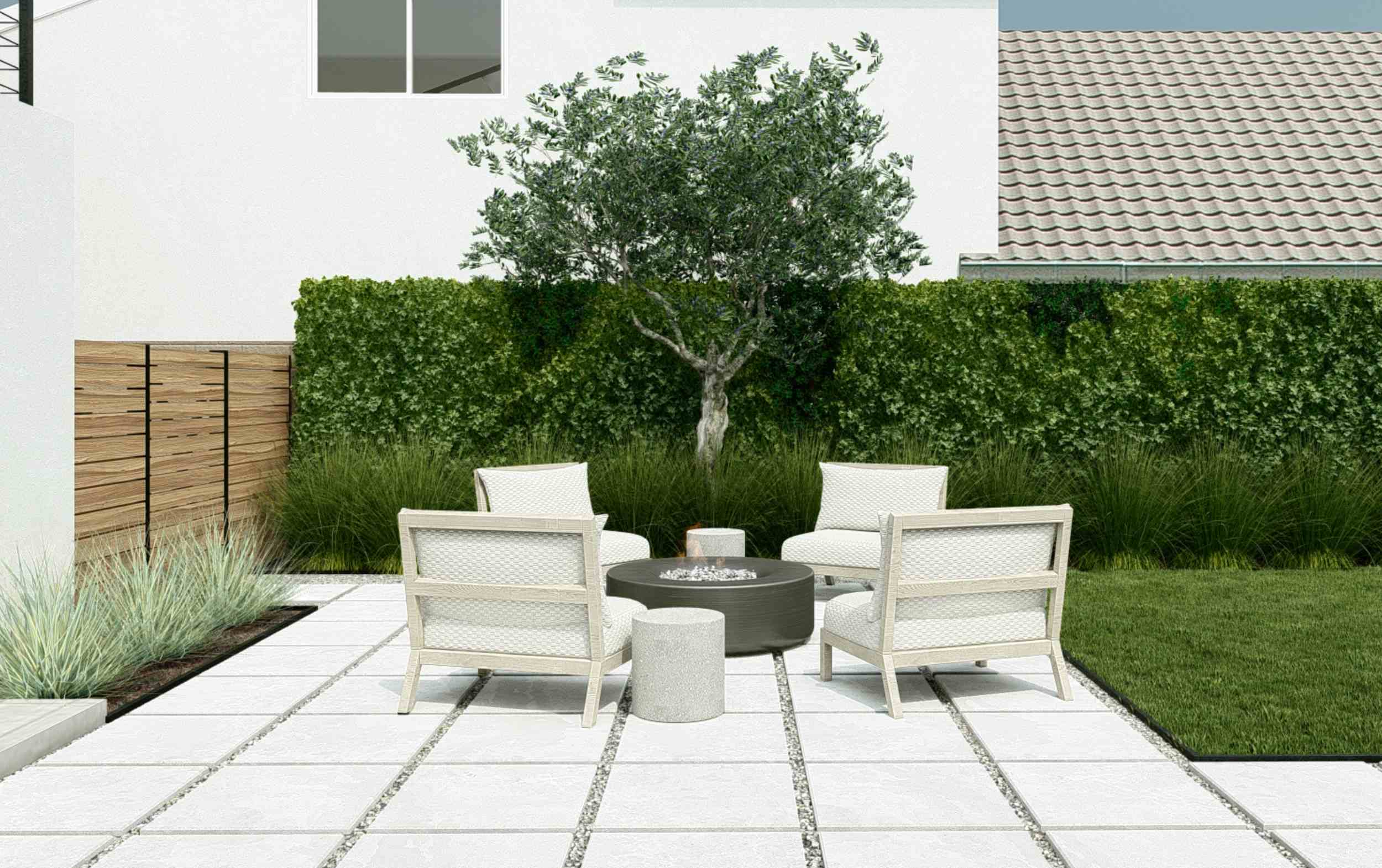Home>Garden Design>How To Landscape Small Backyard


Garden Design
How To Landscape Small Backyard
Modified: January 22, 2024
Learn how to design a beautiful landscape for your small backyard with our expert tips and ideas. Transform your outdoor space with landscape design techniques that maximize every inch of your property.
(Many of the links in this article redirect to a specific reviewed product. Your purchase of these products through affiliate links helps to generate commission for Chicagolandgardening.com, at no extra cost. Learn more)
Table of Contents
Introduction
Welcome to the world of landscape design, where creativity meets nature! If you have a small backyard, you might think that creating an inviting and visually appealing outdoor space is impossible. Well, think again! With careful planning and strategic design choices, you can transform your compact outdoor area into a beautiful and functional oasis.
A well-designed landscape not only enhances the aesthetic appeal of your backyard but also allows you to make the most of the available space. Whether your goal is to create a cozy retreat for relaxation or to entertain family and friends, there are various approaches you can take to achieve your desired outcome. From careful plant selection to clever use of hardscape elements, the options are endless.
In this article, we will guide you through the process of landscaping a small backyard, providing you with helpful tips and creative ideas along the way. We will discuss the importance of assessing your backyard, planning your design, selecting the right plants, incorporating hardscape elements, maximizing space with vertical gardens, and adding functional features. Additionally, we will provide maintenance tips to ensure your small backyard landscape stands the test of time.
So, let’s dive in and discover how you can transform your small backyard into a stunning outdoor retreat!
Assessing Your Small Backyard
Before diving into the design process, it’s essential to thoroughly assess your small backyard to understand its unique features and limitations. By doing so, you can make informed decisions about your landscape design and ensure its successful execution.
Start by examining the size and shape of your backyard. Measure the dimensions and take note of any irregularities or obstacles such as trees, utility boxes, or uneven terrain. Understanding the layout will help you determine how to make the most of the available space.
Next, consider the existing elements in your backyard that you want to preserve or work around. These elements could include mature trees, a natural slope, or a focal point like a fountain or sculpture. Incorporating these existing features into your design can add character and create a harmonious blend between nature and your design elements.
Take note of the sunlight patterns in your backyard. Observe how the sun moves throughout the day, as this will determine the amount of sunlight different areas receive. Sun-loving plants should be placed in the sunnier spots, while shade-loving plants can thrive in areas with limited sunlight.
Identify the different zones or areas you want to create in your backyard. Consider your lifestyle and how you plan to use the space. Do you want a dining area, a lounge space, or a garden? Clearly defining these zones will help you allocate space effectively and ensure a functional and balanced design.
Assess the soil quality and drainage in your backyard. This will impact the types of plants you can grow and how you design your irrigation system. If you have poor soil quality, consider incorporating raised beds or containers to create optimal growing conditions for your plants.
Lastly, think about the overall ambiance or style you want to create in your small backyard. Are you aiming for a tranquil Zen garden, a vibrant tropical oasis, or a modern minimalist design? Understanding your preferred style will guide your plant and material selection as well as your overall design choices.
By thoroughly assessing your small backyard, taking note of its unique features and limitations, you can lay the foundation for a successful landscape design. A well-planned and strategically designed backyard will not only maximize the use of available space but also create an inviting and harmonious outdoor haven.
Planning Your Landscape Design
Once you have assessed your small backyard, it’s time to move on to the exciting phase of planning your landscape design. This is where you can unleash your creativity and bring your vision to life.
Start by creating a rough sketch or digital layout of your backyard, including the different zones or areas you identified during the assessment. This will serve as a blueprint for your design and allow you to visualize how everything will come together.
Consider the principles of design such as balance, scale, harmony, and focal points. These principles will guide your design choices and ensure a visually appealing and cohesive result. For example, if you have a small backyard, using plants and hardscape elements in varying heights can create a sense of vertical balance and maximize the perception of space.
Next, think about the color palette for your landscape design. Coordinate your plant selection, hardscape materials, and even accessories such as cushions or decorations to create a harmonious and visually pleasing color scheme. A limited color palette can make your small backyard appear larger and more unified.
When selecting plants for your small backyard, choose those that are suitable for your climate, soil type, and sun exposure. Opt for compact varieties or those with a narrow growth habit to maximize space. Consider using a mix of evergreen and seasonal plants to ensure year-round interest. Incorporating plants of different textures and foliage colors will also add visual depth to your design.
Incorporating hardscape elements such as pathways, patios, or decking can add structure and functionality to your small backyard. Choose materials that complement your design style and are proportionate to the space. Keep in mind that using smaller pavers or tiles can create the illusion of a larger area.
Integrate focal points into your design to draw the eye and create visual interest. These could be a statement plant, a water feature, a sculpture, or even a seating area. Focal points create a sense of hierarchy and help anchor your design.
Lastly, consider the practical aspects of your landscape design. Ensure there is sufficient space for movement and create a logical flow between the different zones in your backyard. Install adequate lighting to extend the usability of your outdoor space into the evening hours. And don’t forget about irrigation – plan for an efficient watering system to keep your plants healthy and thriving.
By carefully planning your landscape design, taking into account the principles of design, plant selection, hardscape elements, and practical considerations, you can create a visually stunning and functional small backyard. A well-designed landscape will make the most of your limited space and provide a delightful outdoor sanctuary for years to come.
Choosing the Right Plants
When it comes to landscaping a small backyard, selecting the right plants is crucial. The plants you choose will not only enhance the overall aesthetic appeal of your outdoor space but also need to thrive in the limited space available.
Start by considering the size and growth habit of plants. In a small backyard, it’s important to choose plants that won’t outgrow the space or overwhelm the design. Look for compact or dwarf varieties that are suited for smaller gardens. Plants with a narrow growth habit, such as columnar trees or upright shrubs, can also help maximize vertical space.
Consider the lighting conditions in your backyard. Some plants require full sun, while others prefer shade. Take note of the areas with direct sunlight and those that are more shaded throughout the day. This will help you determine which plants to place in each area for optimal growth.
Choose plants that are suitable for your climate and soil type. Native plants and those adapted to your specific region are more likely to thrive in your backyard. They are also generally low-maintenance, which is ideal for small spaces. Research and consult with local nurseries to find the best plants for your area.
Vary the heights and textures of the plants to add visual interest to your small backyard. Incorporate plants with different foliage colors, shapes, and sizes. Mixing evergreen plants with seasonal flowering plants ensures a year-round display of colors and textures.
To make the most of your small space, consider vertical gardening techniques. Use trellises, arbors, or hanging baskets to grow plants vertically instead of horizontally. This not only adds visual interest but also maximizes the growing area without encroaching on the limited ground space.
Incorporate container gardening into your small backyard landscape. Containers allow flexibility in terms of plant placement, allowing you to create focal points or move plants around as needed. Opt for containers in different sizes and materials to add variety and complement your design aesthetic.
Consider the maintenance requirements of the plants you choose. In a small backyard, it’s beneficial to select plants that are low-maintenance and don’t require frequent pruning or extensive care. This will save you time and effort in the long run.
Lastly, think about the overall theme or style you want to achieve with your plant selection. Whether you prefer a vibrant and tropical look, a serene Japanese garden, or a modern minimalist design, choose plants that align with your desired aesthetic. The plants you select should contribute to the overall ambiance and atmosphere of your small backyard.
By carefully selecting the right plants for your small backyard, you can create a lush and inviting outdoor space. Consider the size, growth habit, lighting requirements, climate suitability, and maintenance needs of each plant. Vary the heights and textures, explore vertical gardening techniques, and incorporate container gardening for added interest. With the right plant selection, your small backyard will be transformed into a beautiful and thriving landscape.
Creating Visual Interest with Hardscape Elements
Hardscape elements are an integral part of any landscape design, and they play a crucial role in creating visual interest in your small backyard. By incorporating various hardscape features, you can add structure, texture, and functionality to your outdoor space.
Start by considering the overall layout and design of your small backyard. Determine where you want to place key hardscape elements such as pathways, patios, or decks. These features not only provide a designated area for movement and relaxation but also serve as anchor points for your design.
When designing pathways, opt for materials that are proportionate to the space and complement the style of your backyard. Natural stone, gravel, or pavers can create a cohesive and visually appealing pathway while leading the eye through the garden. Curved pathways can also add interest and soften the overall design.
A patio or deck can serve as a gathering space or an outdoor dining area in your small backyard. Choose materials that are durable, slip-resistant, and low-maintenance. Consider the scale of the space and select furniture that is appropriate for the size of your patio or deck. Folding or stackable furniture can be a practical option to save space when not in use.
Add texture to your small backyard by incorporating retaining walls or garden beds. These can define different areas or create planting pockets within your landscape. Use materials like stone or timber to match the overall aesthetic of your backyard. Consider tiered or cascading walls to add depth and dimension to your design.
A water feature can bring an element of tranquility and serenity to your small backyard. Even a small fountain or pond can create a soothing ambiance. Just be mindful of the scale and proportion of the water feature, ensuring it doesn’t overpower the space.
Lighting is another essential hardscape element that can enhance the visual appeal of your small backyard, as well as extend the usability of the space into the evening. Take advantage of different lighting techniques such as pathway lights, uplights, and string lights to create a warm and inviting atmosphere.
Integrate seating areas within your small backyard design. Built-in benches or walls can provide seating while minimizing the use of space. Alternatively, opt for space-saving options like folding chairs or compact outdoor furniture sets. By adding seating, you create a welcoming and functional area for relaxation or entertaining.
Don’t forget to incorporate decorative elements such as sculptures, pots, or outdoor artwork. These can add a personal touch and reflect your design style. Just ensure they are proportionate to the size of your small backyard and don’t overwhelm the space.
By carefully selecting and placing hardscape elements in your small backyard, you can create visual interest and enhance the overall design. Consider pathways, patios, retaining walls, water features, lighting, seating areas, and decorative elements. Each of these features should contribute to the aesthetic appeal and functionality of your outdoor space, making it an inviting and enjoyable place to spend time.
Maximizing Space with Vertical Gardens
When you have a small backyard, every inch of space matters. One effective way to maximize your outdoor area is by incorporating vertical gardens. Vertical gardening allows you to take advantage of vertical spaces, such as walls, fences, or trellises, to grow plants, adding beauty and functionality to your small backyard.
Vertical gardens not only help save valuable floor space but also create an eye-catching display of plants. Here are a few tips to help you maximize space with vertical gardens:
1. Choose the Right Plants: Select plants that are well-suited for vertical growth, such as climbing vines, creepers, or plants with trailing habits. Consider the light conditions in your backyard and choose plants that thrive in those conditions.
2. Install Trellises or Lattice Panels: Attach trellises or lattice panels to walls, fences, or other vertical surfaces. These structures provide support for vertical growth and allow plants to climb and spread. Choose materials that complement your backyard’s design, such as wood or metal.
3. Use Hanging Baskets or Planters: Hang baskets or planters from hooks or brackets on walls or fences. This allows you to utilize vertical space and grow plants without taking up ground space. Choose hanging baskets that are lightweight and consider the weight capacity of the supporting structure.
4. Incorporate Living Walls: Living walls, also known as green walls, are vertical structures covered in plants. They can be freestanding or attached to a wall. Living walls not only provide a stunning visual display but also offer improved air quality and insulation. Consider using modular systems or planting pockets to create your living wall.
5. Utilize Vertical Planters and Pockets: Vertical planters and pockets are specially designed containers that can be stacked or hung on walls or fences. These containers allow you to grow plants in a vertical arrangement, making efficient use of space. Consider using lightweight and weather-resistant materials for these planters.
6. Create a Vertical Herb or Vegetable Garden: Grow your own herbs or vegetables in a vertical garden. Use pockets, planters, or even repurposed containers to create a vertical edible garden. This not only saves space but also provides a fresh and convenient supply of herbs and vegetables.
7. Provide Adequate Watering and Care: Ensure that your vertical garden receives adequate water and care. Consider installing an irrigation system or using self-watering containers to make watering easier. Regularly monitor and maintain your vertical garden to ensure plants stay healthy and thrive in their vertical environment.
By incorporating vertical gardens into your small backyard, you can make the most of limited space while creating a visually stunning and vibrant outdoor area. Whether it’s climbing vines, hanging baskets, living walls, or vertical planters, there are numerous options to explore. Embrace the vertical dimension and enjoy the benefits of a flourishing and space-efficient garden.
Adding Functional Features to Your Small Backyard
In addition to creating a visually appealing landscape, it’s important to incorporate functional features into your small backyard. By adding practical elements, you can enhance the usability and enjoyment of your outdoor space. Here are some functional features to consider:
1. Outdoor Seating: Create a comfortable seating area where you and your guests can relax and unwind. Opt for space-saving furniture such as folding chairs or benches that can be easily stored when not in use. Incorporate cushions or outdoor pillows to add comfort and style.
2. Dining Area: If you enjoy dining outdoors, consider incorporating a dining space in your small backyard. Choose a compact table and chairs that can accommodate your family or guests. By creating a dedicated area for dining, you can enjoy meals al fresco and make the most of your outdoor space.
3. Fire Pit or Fireplace: A fire pit or fireplace adds both warmth and ambiance to your backyard. It provides a cozy gathering spot, allowing you to extend the usability of your outdoor space into the cooler evenings. Choose a fire feature that suits the scale and style of your backyard.
4. Outdoor Kitchen or Grill: If you love cooking and entertaining outdoors, consider incorporating an outdoor kitchen or grill area. This functional feature allows you to prepare meals while enjoying the fresh air and socializing with guests. Select appliances or a grill that fits your space and cooking needs.
5. Storage Solutions: Maximizing storage is crucial in a small backyard. Explore options such as outdoor storage benches or sheds to keep your garden tools, cushions, and other outdoor items organized and protected. Think creatively and look for compact and hidden storage solutions that blend seamlessly into your landscape design.
6. Play Area: If you have children, designate a play area in your small backyard. Install a swing set or play structure that fits the space, or include features like a sandbox or mini sports area. This ensures that your children have a safe and fun place to play while enjoying the outdoors.
7. Outdoor Lighting: Proper lighting is essential for extending the usability of your small backyard into the evening hours. Install outdoor lighting fixtures strategically to provide safety, security, and ambiance. Consider pathway lights, spotlighting focal points, or string lights to create a magical atmosphere.
8. Privacy Elements: Enhance privacy in your small backyard by incorporating privacy screens, pergolas with climbing plants, or strategically placed shrubs or trees. This allows you to create a secluded retreat and enjoy your outdoor space without feeling exposed to neighbors or passersby.
9. Water Feature: Incorporating a water feature, such as a small pond, fountain, or birdbath, adds a tranquil element to your backyard. The sound of running water creates a soothing environment and attracts birds and other wildlife. Choose a water feature that fits the scale and style of your small backyard.
By adding functional features to your small backyard, you can create a space that is not only visually appealing but also practical and enjoyable. Whether it’s seating areas, dining spaces, fire pits, storage solutions, or play areas, consider your personal needs and preferences to customize your outdoor space to suit your lifestyle.
Tips for Maintaining a Small Backyard Landscape
Keeping your small backyard landscape well-maintained is essential to ensure its longevity and beauty. Here are some helpful tips to help you maintain your outdoor oasis:
1. Regularly Water your Plants: Establish a watering schedule based on the specific needs of your plants. Moisture levels can fluctuate more in small spaces, so it’s important to monitor and adjust your watering accordingly. Consider using drip irrigation or soaker hoses to deliver water directly to the roots.
2. Mulch Garden Beds: Apply a layer of mulch around your plants to help retain moisture, regulate soil temperature, and suppress weed growth. Mulching also adds a polished look to your small backyard and reduces the need for frequent watering and maintenance.
3. Prune and Trim Regularly: Trim and prune your plants regularly to maintain their shape, promote healthy growth, and prevent overcrowding. Remove any dead or diseased branches and thin out dense areas to improve air circulation. Keep an eye out for overgrown plants that may encroach on limited space.
4. Control Weeds: Stay on top of weed control in your small backyard. Regularly inspect your garden beds and lawn, and promptly remove any unwanted weeds. Consider using mulch, landscape fabric, or organic weed control methods to minimize weed growth and reduce the amount of manual labor required.
5. Monitor Pests and Diseases: Keep an eye out for signs of pests or diseases in your plants. Identify and address any issues early to prevent them from spreading and causing damage to your small backyard. Consider natural pest control methods or consult with a professional if necessary.
6. Regularly Clean Hardscape Elements: Clean and maintain your hardscape elements, such as pathways, patios, or decks, regularly. Sweep away debris and remove any stains or moss growth. Regular maintenance will not only keep your hardscape elements looking their best but also prevent any potential hazards or damage.
7. Fertilize Wisely: Apply fertilizer to your plants as needed, following the instructions and recommendations specific to each plant. Over-fertilizing can lead to excessive growth and potential harm to your plants. Consider using slow-release fertilizers or organic alternatives for a more controlled and environmentally friendly approach.
8. Stay on Top of Leaf and Debris Removal: Regularly remove fallen leaves, twigs, and other debris from your small backyard. This not only keeps your outdoor space looking tidy but also prevents moisture buildup and potential pest issues. Use a rake, leaf blower, or a small broom to clear away debris.
9. Protect from Extreme Weather: Take preventative measures to protect your plants and hardscape elements from extreme weather conditions. Cover sensitive plants during frost or provide shade during hot summer days. Protect your hardscape elements from excessive sun exposure or harsh winter conditions to avoid damage.
10. Schedule Maintenance Tasks: Create a maintenance schedule to stay organized and ensure regular upkeep of your small backyard. Plan for tasks such as watering, pruning, fertilizing, and cleaning. Stay consistent with your maintenance routine to keep your outdoor space in top shape throughout the year.
By following these tips for maintaining your small backyard landscape, you can enjoy a beautiful and vibrant outdoor space that brings you joy and relaxation. With proper care and attention, your small backyard will continue to flourish and provide a haven for years to come.
Conclusion
Transforming a small backyard into a stunning and functional landscape is a rewarding endeavor. By carefully assessing your space, planning your design, choosing the right plants, incorporating hardscape elements, maximizing vertical gardening, and adding practical features, you can create an inviting and captivating outdoor space.
Assessing your small backyard allows you to understand its unique features and limitations, paving the way for a well-planned design. By considering the size, shape, sunlight patterns, and existing elements, you can make the most of the available space and create a harmonious blend between nature and design.
Planning your landscape design involves embracing the principles of design, selecting suitable plants, and incorporating hardscape elements. By creating balance, choosing plants that thrive in your climate, and incorporating pathways, seating areas, water features, and lighting, you can achieve a visually pleasing and functional design.
Choosing the right plants is crucial for a successful small backyard landscape. By selecting compact varieties, considering light exposure, and incorporating vertical gardening techniques, you can maximize space and create an appealing display of plants. Remember to choose plants suitable for your climate and maintenance needs.
Incorporating hardscape elements adds structure, texture, and functionality to your small backyard. By carefully selecting and placing pathways, patios, seating areas, and decorative features, you can create visual interest and enhance the overall design. Additionally, consider privacy elements, storage solutions, and other practical features that suit your lifestyle.
Maximizing vertical space through vertical gardens allows you to efficiently utilize your small backyard. By choosing appropriate plants, installing trellises or living walls, and using hanging baskets or containers, you can create a vibrant and space-saving garden that adds beauty to your outdoor space.
Maintaining your small backyard landscape is essential to preserve its beauty and ensure its longevity. Consistently watering, pruning, controlling weeds, and monitoring pests and diseases will keep your plants and hardscape elements in good health. Regular cleaning and protection from extreme weather conditions are also important for maintenance.
In conclusion, with careful planning, thoughtful design choices, and proper maintenance, your small backyard can be transformed into an oasis of beauty and functionality. Embrace your creativity, make the most of the available space, and enjoy the rewards of a stunning landscape that brings you joy and relaxation.
